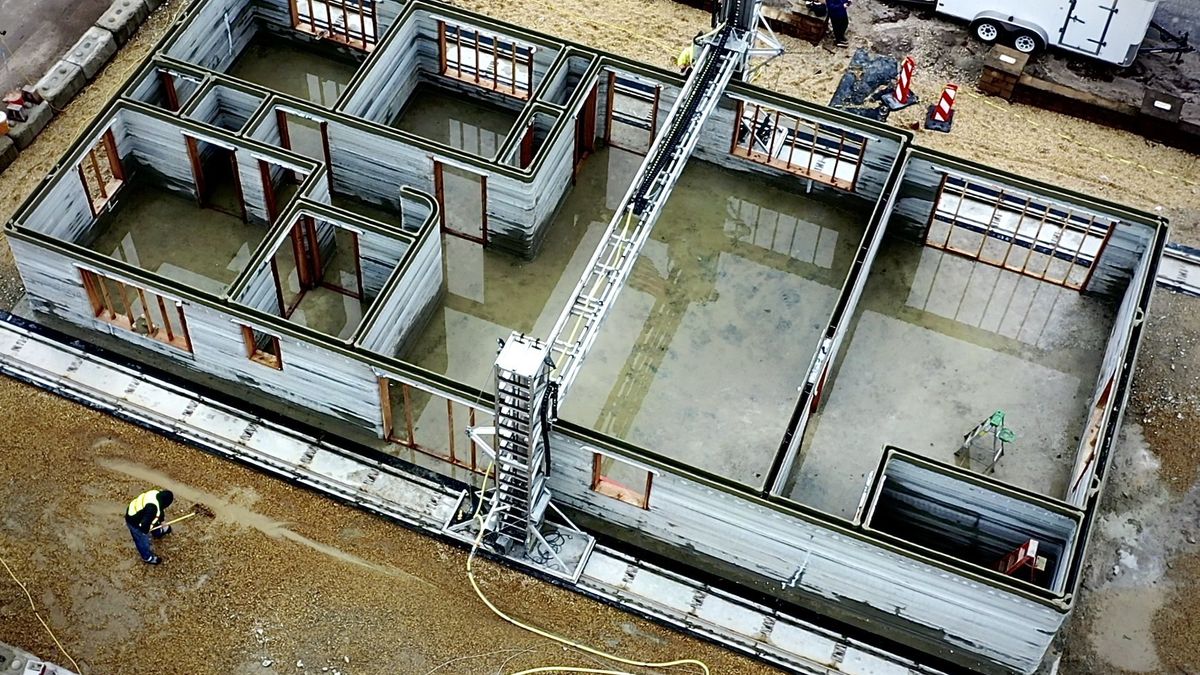Table Of Content

Firstly, the aesthetic design of homes is limited, often meaning having visible layers and a modern look. The material used also means not being able to construct high-rise buildings, due to the lack of strength to deal with the pressure. A document published by COBOD, a Danish company that is a global leader in 3D printing solutions for the construction industry, warns consumers by taking stock of what 3D construction is really like today. For example, it mentions the company Winsun, which claims to have built 10 3D buildings in 10 days.
The COBOD BOD2 Printer Takes Over Europe
Foot houses take only a day each to go from nothing to a completely finished and ready-to-move-in house. On the extreme end of affordable housing of course, stand ICON and WASP’s efforts. Some already are — such as Project Milestone (listed below), which had its first tenants move in on April 30, 2021, or this three-bedroom, Virginian house, which became move-in ready in just 12 hours. Using a larsen truss system, for example, is a quick and effective way to build a very efficient structore from biosourced materials.
Japanese company 3D printed a tiny home for the price of a car: photos - Business Insider
Japanese company 3D printed a tiny home for the price of a car: photos.
Posted: Thu, 14 Sep 2023 07:00:00 GMT [source]
Impact on the Construction Industry and Housing Market
Sustainable building company Kamp C 3D printed an entire two-story house in Belgium’s Flanders region with Europe’s largest 3D printer. Apis Cor’s build brought 3D printed structures into the public eye, encouraging others to get involved and democratize 3D printed house building. This administrative building comprises two floors, featuring beautiful 3D printed architecture born out of an ongoing collaboration between Russian 3D printed house company Apis Cor and the Dubai Municipality. We also discuss the key advantages of 3D printing houses versus traditional housebuilding later on in the article.
3D Printed “Office of the Future” in Dubai
Due to the material mainly being concrete, they are extremely durable dwellings that can withstand a multitude of challenges. There are also companies that will take your building plans and create walls to match that can be delivered and assembled, that can be a great option as it is often cheaper as there is less material waste. And, you’re not leaving your wood frame exposed out in the rain for weeks or months to get saturated and warped. On average, the construction of a new 2,000-square-foot house generates more than 2,000 kilograms of construction waste, the vast majority of which ends up in landfills. One important contribution that 3D printing can make in terms of sustainable construction is the reduction of construction waste, related to framing.
This method of additive manufacturing is also known as construction 3D printing. The Alquist Virginia Project is a revolutionary undertaking in terms of 3D printing houses. The company plans to build almost 200 individual 3D printed houses in the small town of Pulaski, Virginia.
Who builds 3D printed homes?
Inside a recyclable 3D-printed tiny home - DW (English)
Inside a recyclable 3D-printed tiny home.
Posted: Wed, 31 Jan 2024 08:00:00 GMT [source]
The world's largest 3D printer, seen Tuesday at the University of Maine in Orono, Maine, could offer an avenue to affordable housing in the region. Such printed buildings can be recycled, which is unique compared to current construction. “You can basically deconstruct it, you can grind it up if you wish, the 3D printed parts, and reprint with them, do it again,” Dagher said before the event. The printer's frame fills up the large building in which it’s housed on the UMaine campus, and can print objects 96 feet long by 32 feet wide by 18 feet high. And there could be even larger printers in the future after the University of Maine breaks ground this summer on a new building. Our dedication lies in revitalizing smaller communities, offering them sustainable and affordable living spaces.
Quality and Durability of 3D Printed Houses
Additionally, this estimate does exclude any pauses taken for second round error corrections, setup time needed for the framework and scaffolding, or any additional installations completed after the home is printed. 3D printed houses can be made out of a variety of materials including concrete, recycled plastic, rice waste, mud, sand, or even soil. Some variation of concrete is most common, but industrial printers can work with lots of different materials. As a guy with a natural fascination for both building houses and technology, the idea of 3D printing a house is right up my alley. Checking out examples of 3D printed tiny houses gets me excited about my own future as a tiny house builder. 3D printing technology has revolutionized many industries, including the construction industry.
In this article, we will explore the cost of 3D printing a house and examine the pros and cons of this innovative technology. The impact of 3D printed houses on the construction industry and housing market is expected to be significant. With the ability to print houses in a matter of days or weeks, the construction process will be faster, more efficient, and less labor-intensive. This could lead to a reduction in construction costs and increased affordability of housing. Another significant benefit of 3D printed houses is their sustainability and environmental impact.
Structural Engineers also use specific methods, such as reinforcing 3D printed houses with Rebar, to give the house additional strength. This adds to their durability and increases their lifespan further than they would otherwise last. Like other 3D printed housing projects, Tvasta, too, aims to build cost-effective housing solutions. It plans to achieve cost savings of approximately 80% to build houses in the long run, giving developing nations such as India a genuine alternative to budget housing solutions. The University of Maine will soon break ground on a new research laboratory called the Green Engineering and Materials (GEM) Factory of the Future.

Our outsourcing services connect you with highly qualified architects from around the world who have the education, experience, and skills necessary to tackle your project with precision and efficiency. Our screening process ensures that you only work with the top 3% of global talent, and our professionals have experience working with US-based companies, making the collaboration process seamless. The cost of a 3D printed house can vary depending on a range of factors, including the size, design, location, and materials used. While some companies claim to be able to 3D print a house for as little as $4,000, the reality is that most 3D printed houses currently cost significantly more than that.
There are other tools and materials that are unique to building a 3D printed tiny house. While 3D printed houses are certainly the face of the future, the process is still up and coming. There are many advantages to using a 3D printer to build a tiny house, but also many disadvantages. In 2023, industrial-sized 3D printers are able to print an entire home in less than 24 hours for a tiny house at 225 square feet or less.
3D-printed homes offer a promising solution that could go some way to help solve housing shortages, reduce construction costs, and be more eco-friendly. Utilizing advanced robotics and sustainable materials, they can be built quickly and with minimal waste. On the other hand, traditional homes, with their time-honored craftsmanship, create a sense of permanence and character in communities that 3D-printed homes lack.

No comments:
Post a Comment